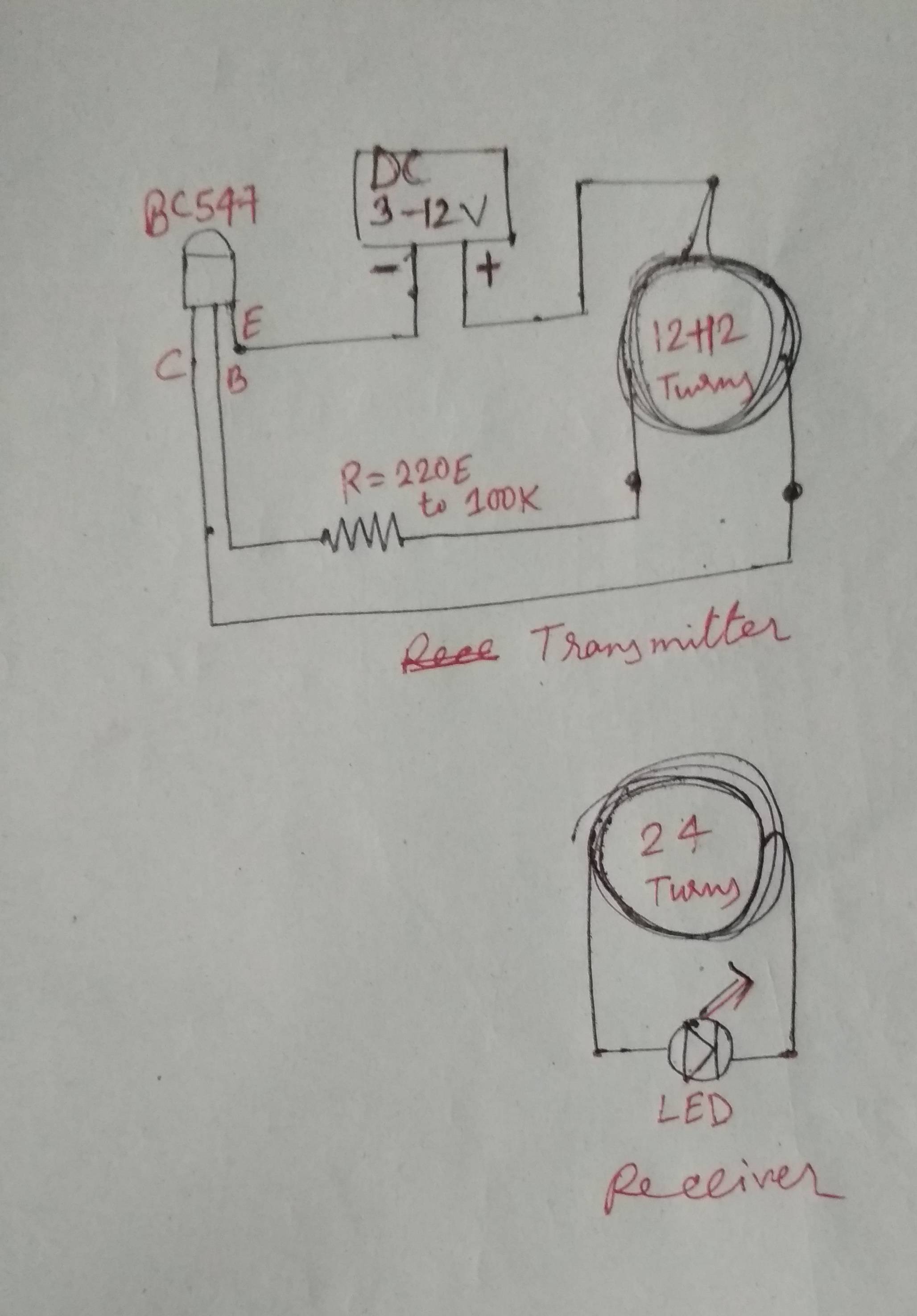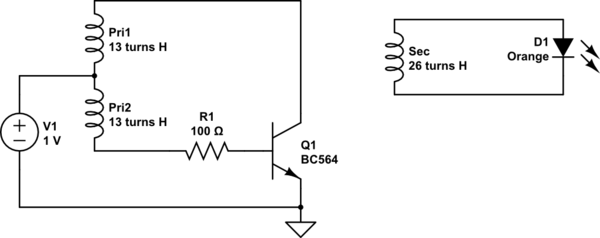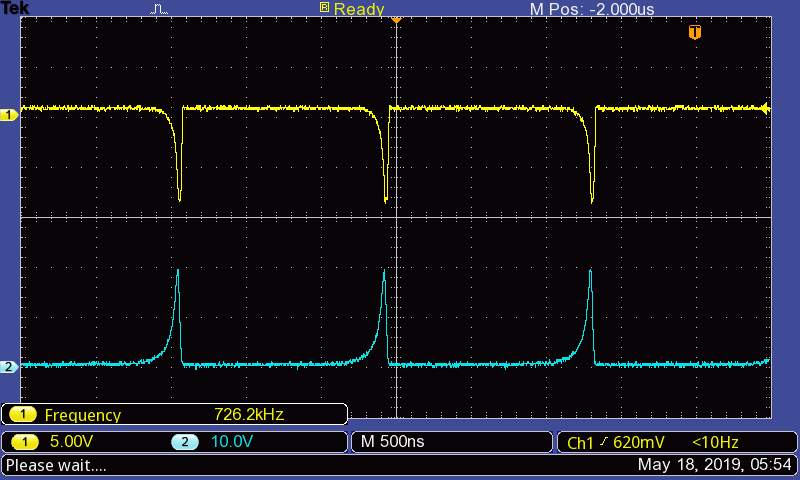I made wireless electricity transmission model using the principle of magnetic inductive coupling to transfer electricity between two separate coils. The model is very simple, known to everyone and lot of resourses available in internet. My circuits are as bellow...
I am using BC547 transistor. The transmitter coil have 12 + 12 turns and receiver have 24 turns. Initially I started with DC 3.3v supply, 1.2k ohms resistor for base. Only one thing that i have no idea what is the awg of the magnet wire! I collected the wire from a small on board transformer from smps. I am using solder less breadboard.
But nothing happens. No electricity transmits ! I checked all the circuit diagrams. Tested continuity with multi meter. Everything was fine. I also tested the transistor and also changed with another piece. But nothing works. So then i switched the base resistor to 220 ohms through 100k many values but no result. Then I increased the supply to DC 5V and tried with many resistors. But still no result. Now the transistor started to get some hot.
Then I switched to 12 V DC. Now I can see a very little flash in led (brightness not more than 5 percent) for only about one tenth of a second. But this time the transistor becoming very much hot withing 3 seconds. So I disconnects switch immediately.
So where is the fault? I have found in internet this is working fine for others. Can anyone tell where is the problem? Please don't ask me to use other transistor, BC 547 working fine for others. So try to find the fault. Thnx in advance.




